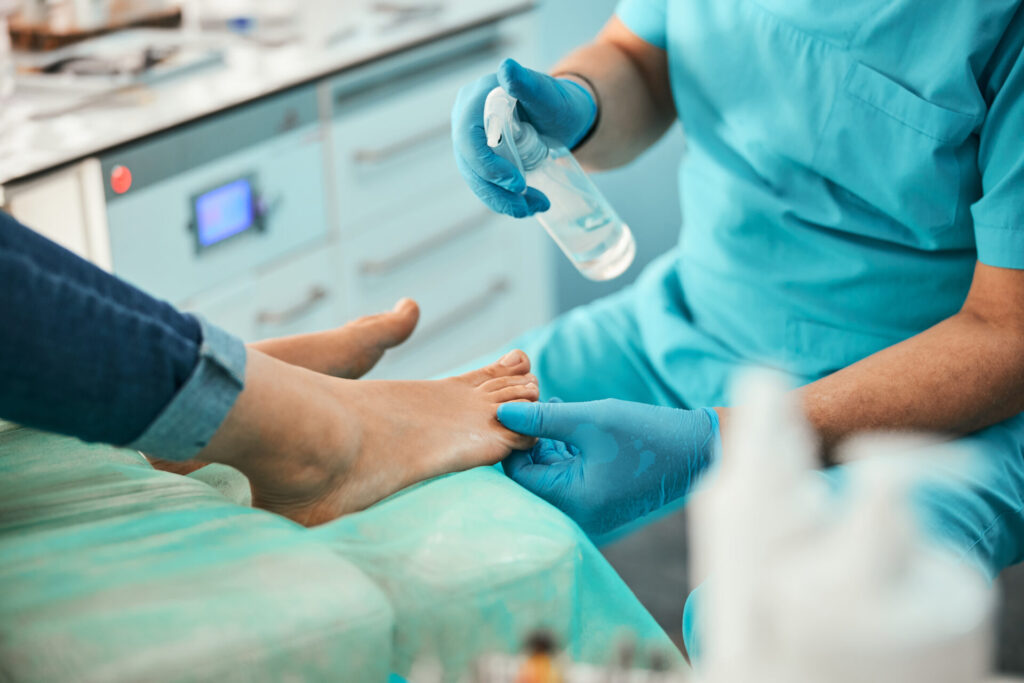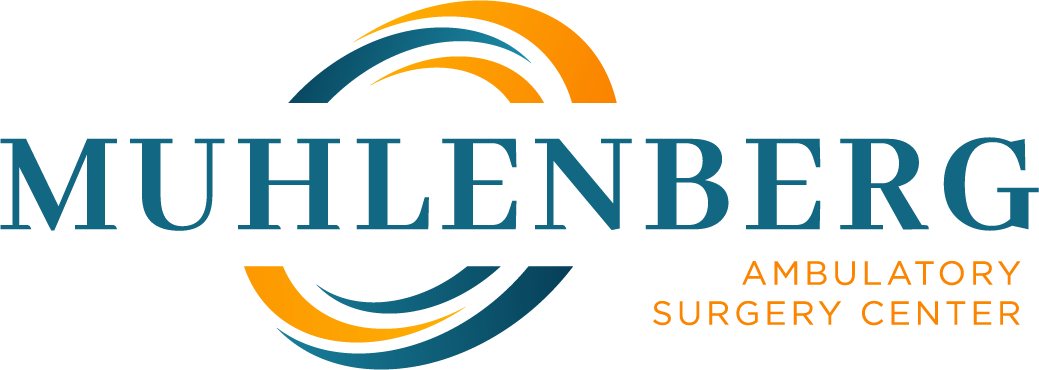Efficient & Affordable Care Through Minimally-Invasive Outpatient Services
Muhlenberg ASC is a multispecialty outpatient care center providing high-quality, same-day surgical services in the following specialties: Pain Management, Orthopedics, Sports Medicine, Ortho Spine, Neuro/Spine, and Lower-Extremity Vascular Surgery (Vein Ablation).
Pain Management
Muhlenberg ASC’s Pain Management Specialists are experts in pain relief, ensuring that each patient leaves our facility feeling recovered and able to participate in their daily tasks. By utilizing a variety of different techniques, our pain management team is able to provide care personalized to you and your pain.
We strive to bring comfort and restore function while renewing hope. Offering unsurpassed outpatient, minimally-invasive surgical pain services, our fellowship-trained and highly skilled pain management physicians treat pain with an empathetic approach.
Delivering the most effective therapeutic services in order to aid patients in the North Jersey area, our pain management team aims to improve function and help patients return to a pain-free lifestyle through procedures such as:
- Epidural Steroid Injection: An epidural steroid injection is used to improve spinal stenosis or spinal disc herniation. During this procedure, corticosteroids and/or local anesthetics are injected into the epidural space around the spinal cord to relieve discomfort or pain.
- Sacroiliac (SI) Joint Injection: Surgeons inject anti-inflammatory medicine and/or local anesthetics into the SI Joint to rapidly relieve pain or discomfort.
- Peripheral Nerve Block: A peripheral nerve block is used to reduce pain of different neuropathies such as, peripheral neuropathy, diabetic peripheral neuropathy, migraine, and neuropathic pain. Local anesthetics are injected around the peripheral nerve branches to immediately relieve pain or discomfort.

Orthopedics
With the continued advancement of medical equipment and technology, our board-certified Orthopedics team provides the highest level of orthopedic care. Muhlenberg ASC’s orthopedic surgeons are well-equipped to deliver the necessary care to patients in order to heal injuries or diseases of the skeletal system.
Some common orthopedic procedures and techniques performed at Muhlenberg ASC are:
- Tendon Sheath Tumor Removal: This technique is utilized to remove tumors (benign sacs of gelatinous fluid) in the wrist and sometimes the finger joints. Surgery may be performed endoscopically or through small incisions. The surgeon will isolate the sheath and tendon and protect the nerves and blood vessel branches. The sheath is then either cut (excised) entirely or loosened (released) by making a cut along its length.
- Trigger Finger Surgery: Trigger finger or stenosing tenosynovitis, is when the band tissue (pulley) holding the tendon to the finger bone is inflamed. This narrows the space in the sheath around the tendon which causes stiffness and pain. In order to relieve this stiffness/pain, the surgeon will insert a needle through an incision in the skin to cut the pulley free.
- Finger Fracture Treatment: Often, finger fractures will not need surgery and can be treated with casting, splinting, or taping the fractured finger to the adjacent finger to prevent rotation. However, surgery is required when the fracture ends are misaligned. The surgeon will realign the fracture ends and insert pins, plates, or screws to hold it in place.
- Finger Joint Fusion Treatment: Finger joint fusion treatment is often used to relieve arthritis pain in the fingers. A surgeon will remove the damaged bony ends of the finger joint and insert a prosthesis to fuse the bones back together.
- Wrist Joint Repair/Revision: The surgeon will remove the worn-out ends of bones and replace them with artificial joints (prosthesis) in order to retain and recover wrist movement.
- Knee Arthroscopy: With the insertion of a small camera through an incision in the knee, surgeons are able to repair ligaments, clean out and repair cartilage or remove debris.
- Radial Head Reconstruction: In this procedure, a surgeon will make an incision over the outer aspect or back of the elbow to expose the joint. The surgeon will then remove bone fragments, repair the neck of the radius and insert the radial head prosthesis.
- Total Knee Replacement: During a total knee replacement (or “knee arthroplasty”), a surgeon will remove damaged ends of the femur and tibia and replace them with metal components. The undersurface of the patella (kneecap) is cut and resurfaced with a plastic button. Then a metal-grade plastic spacer is inserted between the metal components to help with smooth movements.
- Ulnar Nerve Repair: This procedure is used to relieve pressure on the nerve inside the cubital tunnel (the narrow space through which the ulnar nerve passes around the elbow) by nearby tissue.
- Carpal Tunnel Release:
Carpal tunnel release is a surgery used to treat and potentially heal the painful condition known as carpal tunnel syndrome. Carpal tunnel syndrome is pain and weakness in the hand that is caused by pressure on the median nerve in the wrist. There are two types of carpal tunnel release surgery, the traditional method is the open release, in which the surgeon cuts open the wrist to do the surgery. The other method is endoscopic carpal tunnel release, in which a thin, flexible tube that contains a camera is put into the wrist through a tiny incision (cut). The camera guides the doctor as the surgery is done with thin tools put into the wrist through another small cut.
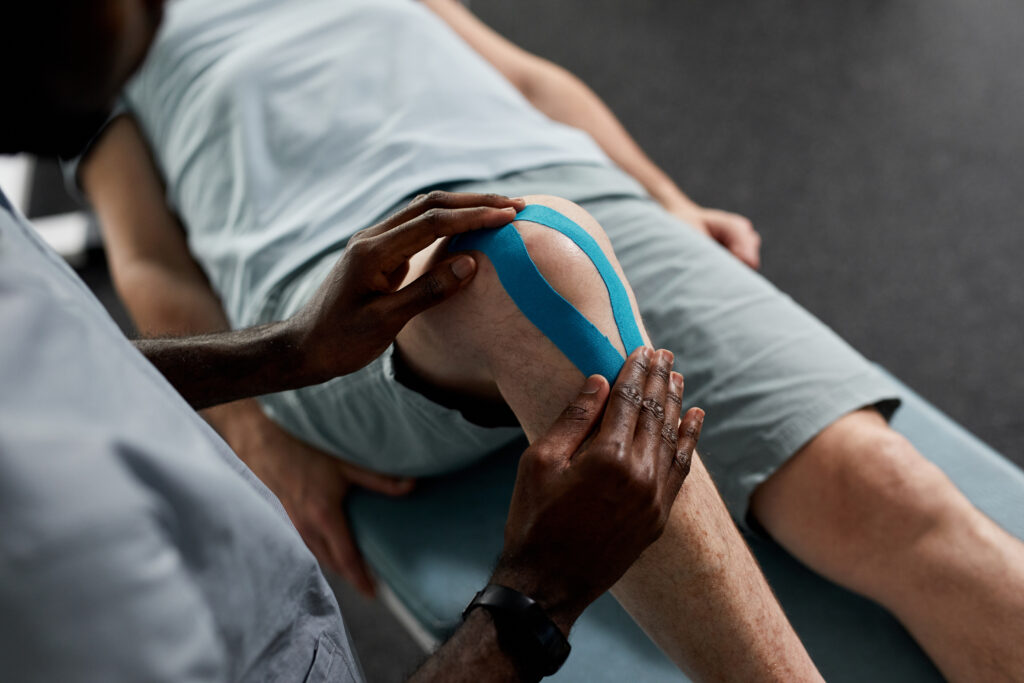
Sports Medicine
Muhlenberg ASC’s Sports Medicine Specialists provide care to athletes to ensure an efficient surgical and recovery process. We provide comprehensive and preventative care in order to avoid any future injuries. Our team works to get you back in shape so that you perform at your best.
Some common sports medicine procedures performed at Muhlenberg ASC include, but are not limited to:
- Meniscectomy: A meniscectomy is the most common surgical procedure performed for meniscus tears which occur through acute injury or degeneration. These tears can create pain with weight-bearing activity, squatting, and twisting. In this procedure, knee arthroscopy is used and the meniscus is trimmed and smoothed with small instruments inserted through incisions in the knee. Patients often recover quickly and completely.
- ACL Reconstruction:
ACL reconstruction is surgery to replace a torn anterior cruciate ligament (ACL) – a major ligament in your knee. ACL injuries most commonly occur during sports that involve sudden stops and changes in direction—such as soccer, football, basketball and volleyball. Ligaments are strong bands of tissue that attach one bone to another bone. During ACL reconstruction, the torn ligament is removed and replaced with a band of tissue that usually connects muscle to bone (tendon). The graft tendon is taken can be harvested one of two ways Autograft tissue is obtained from another part of the patient’s own body (typically from around the injured knee), while allografts are obtained from a tissue donor.
- Knee Tendon Repair: A minimally-invasive incision is used to repair the torn tendon back to the bone.
- Meniscus Repair: The meniscus is repaired using knee arthroscopy. The surgeon will suture the meniscus with specialized instruments inserted through incisions in the knee. Recovery for a meniscus repair is oftentimes longer because weight-bearing and activity restrictions are placed on the patient to ensure that the meniscus fully heals.
- Elbow Arthroscopy: The surgeon will insert a small camera in the elbow joint and has access to clean the joint out, repair cartilage injuries, remove bone spurs or cartilage fragments, and repair or clean out damaged tendons.
- Knee Arthroscopy: With the insertion of a small camera through an incision in the knee, surgeons are able to repair ligaments, clean out and repair cartilage or remove debris.
- Shoulder Injection: The surgeon will inject medicine into the shoulder to rapidly relieve pain and discomfort. These injections may be performed during a regular office visit.
- Decompression: A decompression procedure is performed when the rotator cuff tendons do not have adequate room to move underneath the shoulder blade (acromion)—this can lead to impingement (rubbing of the tendon against the bone which causes the tendon to break down). Using arthroscopic tools, the surgeon will thin the shoulder bone slightly, trim away the bone spurs, and clean up (debride) the rough edges of the tendon. This will eliminate the rubbing of the tendon against the bone to prevent further damage. A decompression can be performed prior to tendon impingement and has a faster recovery time than rotator cuff repair.
- Biceps Tendon Repair: The biceps tendon can tear at its insertion at the elbow when lifting heavy objects or when the elbow is hyperextended. Without treatment, this tear can lead to the deformity of the muscle, weakness, and loss of function.
- Rotator Cuff Repair: A rotator cuff repair is performed arthroscopically with sutures and typically “suture anchors”—small corkscrews screwed into the bone to provide a stable attachment for the stitches. Sometimes, surgeons will use artificial patches or tendon slides to repair the rotator cuff.
- Shoulder Arthroscopy: With the insertion of a small camera through an incision in the shoulder, surgeons are able to see and access the cartilage, labrum, rotator cuff tendons, shoulder ligaments, and more.
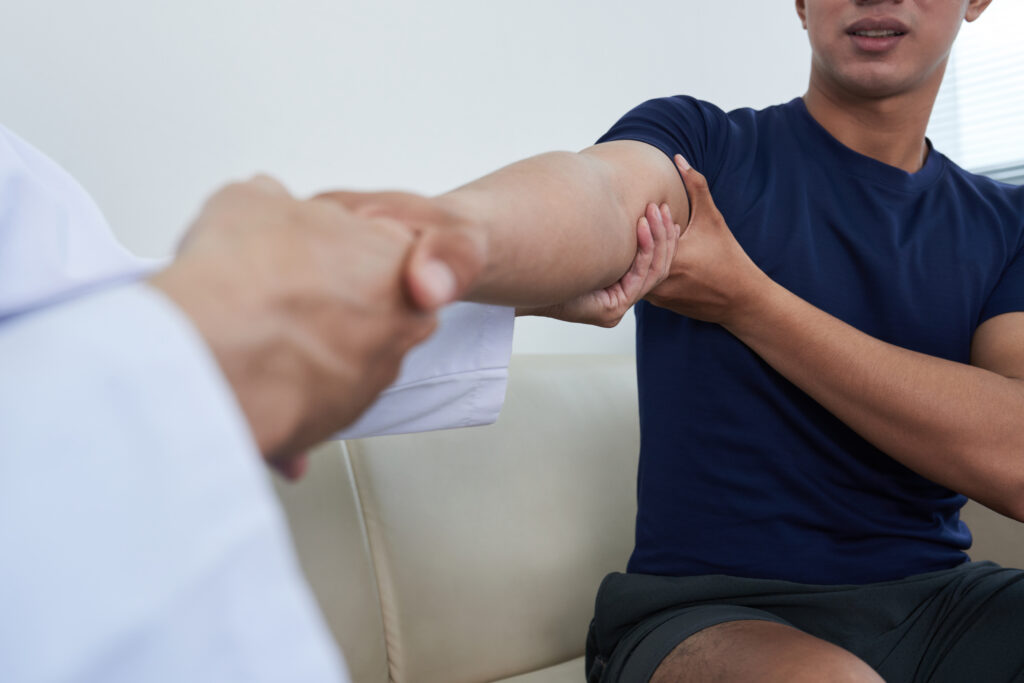
Spine / Neuro
Our board-certified Spine and Neurosurgeons provide the highest quality of care in a comfortable outpatient setting. The types and numbers of spine procedures offered in an outpatient setting are ever-evolving to allow ease of access for patients. Where once only simple decompression surgeries were performed in an ASC, now more complex spine procedures are being performed in the outpatient setting, providing patients with more choices and the ability to recover in the comfort of their own home.
Some common spine/neuro procedures performed at Muhlenberg ASC are:
- Spinal Cord Stimulator Placement: A spinal cord stimulator consists of thin wires and a small, pacemaker-like battery pack. The surgeon will place electrodes between the spinal cord and the vertebrae and place the generator underneath the skin (near the buttocks or abdomen). This treatment allows patients to use a remote control to send electric impulses to the area when they feel pain.
- Posterior Cervical Foraminotomy: The surgeon will create a small incision at the neck in order to remove bone spurs, disc material, and soft tissue. This procedure resolves pinched nerve decompression and relieves pain.
- Lumbar Fusion: A spinal fusion (spondylodesis/spondylosyndesis) joins two or more vertebrae and can be performed at any level in the spine in order to prevent movement between the fused vertebrae.
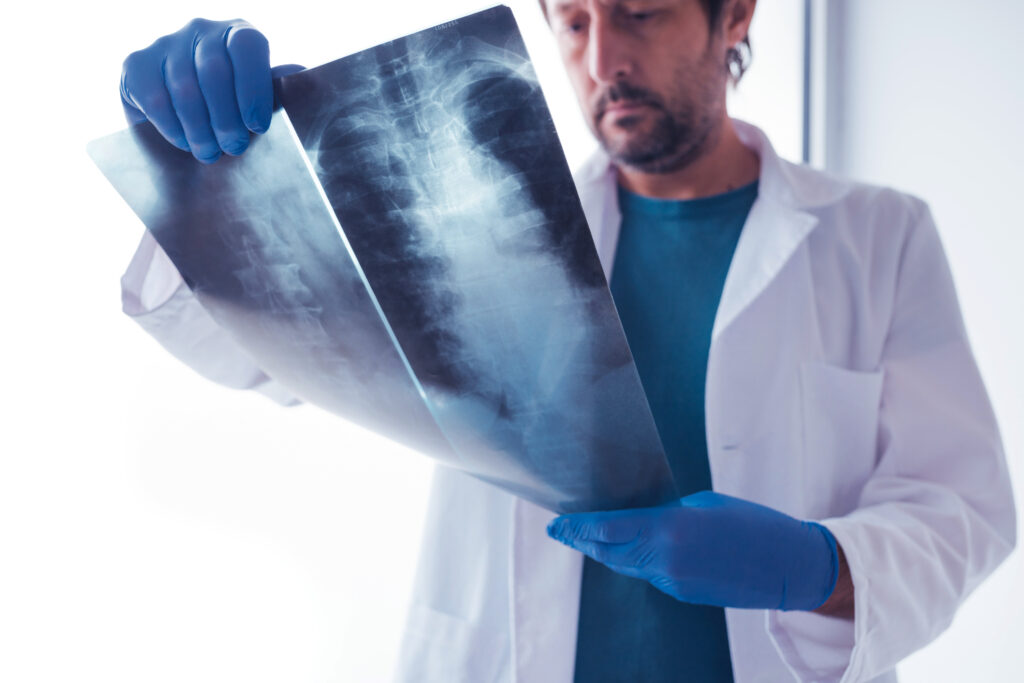
Ortho Spine
The Orthopedic Spine team at Muhlenberg ASC acknowledges that an injury or illness in the bones, joints, and spine can be debilitating. That is why we provide the highest quality of care in order to treat and repair bones, joints, muscles and tendons. We treat some of the most common as well as complex conditions in a convenient and comfortable environment for residents of Union County and beyond.
Some common ortho spine procedures performed at Muhlenberg ASC are:
- Anterior & Posterior Cervical Discectomy & Fusion (ACDF): In order to treat a pinched nerve or spinal cord compression, the surgeon will create an incision at the front of the neck to remove the disc causing pressure, as well as any surrounding bone spurs.
- Lumbar Microdiscectomy & Decompression: A surgeon will perform a lumbar microdiscectomy and decompression to alleviate pain caused by pinched nerves (neural impingement) in the back.
- Lumbar Laminectomy: A surgeon will remove all or part of the lamina (posterior part of the vertebrae) in order to provide space for a compressed spinal cord and/or nerve roots. This often is used to treat symptoms of central spinal stenosis or narrowing of the spinal canal.
- Cervical Arthroplasty: A surgeon will perform a cervical arthroplasty when the space between vertebrae becomes too narrow, leading to part of the cervical disc to press on the spinal cord/nerves. In this case, the surgeon will fully replace a disc in the neck.
- Discectomy: A discectomy is performed to repair herniated and/or bulging discs. A portion of the disc causing pressure on the nerve root is removed. In some cases, the entire disc will have to be removed.
- Minimally-Invasive Spine Surgery: Minimally-invasive spine surgery involves smaller incisions and causes less harm to nearby muscles and other tissues. It has also proven to lead to less pain and a faster recovery.
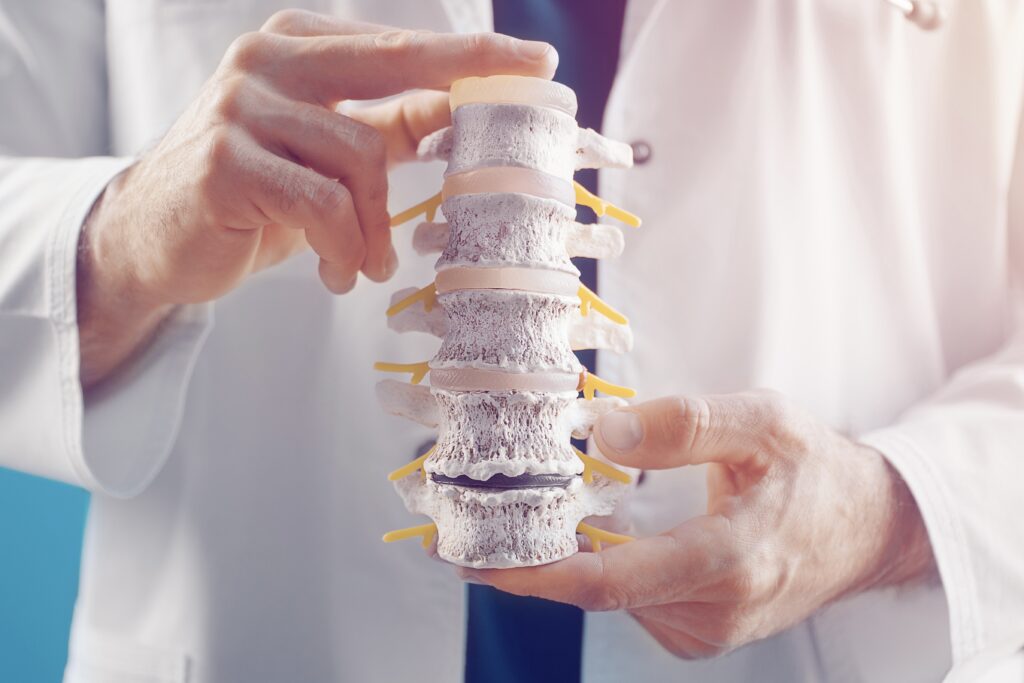
Lower-Extremity Vascular Surgery (Vein Ablation)
Muhlenberg ASC’s team of board-certified lower-extremity vascular surgeons diagnose and treat conditions affecting the veins and arteries throughout the body, including the legs, arms, and kidneys. Our surgeons also provide cosmetic care for those suffering with varicose and spider veins. Our lower-extremity vascular team utilizes a range of minimally-invasive procedures or techniques to treat common lower-extremity vascular conditions.
Some common lower-extremity vascular procedures performed at Muhlenberg ASC are:
- Thrombectomy/Embolectomy: When the blood thickens and clumps, it will form a blood clot in the vessels and block blood flow. Surgeons will perform a thrombectomy/embolectomy where they will make an incision above the blood clot before opening the blood vessel to remove the clot. In some cases, a balloon attached to a catheter is used in the blood vessel to remove any part of the remaining clot. A stent is then placed in the blood vessel to keep it open and restore blood flow.
- Endovenous Laser Treatment (EVLT): Laser heat that is used to treat varicose veins, reducing swelling and alleviating pain and discomfort.
- Sclerotherapy: A surgeon will inject a special sclerosing solution into varicose (or spider) veins which will cause the veins to collapse and eventually disappear.
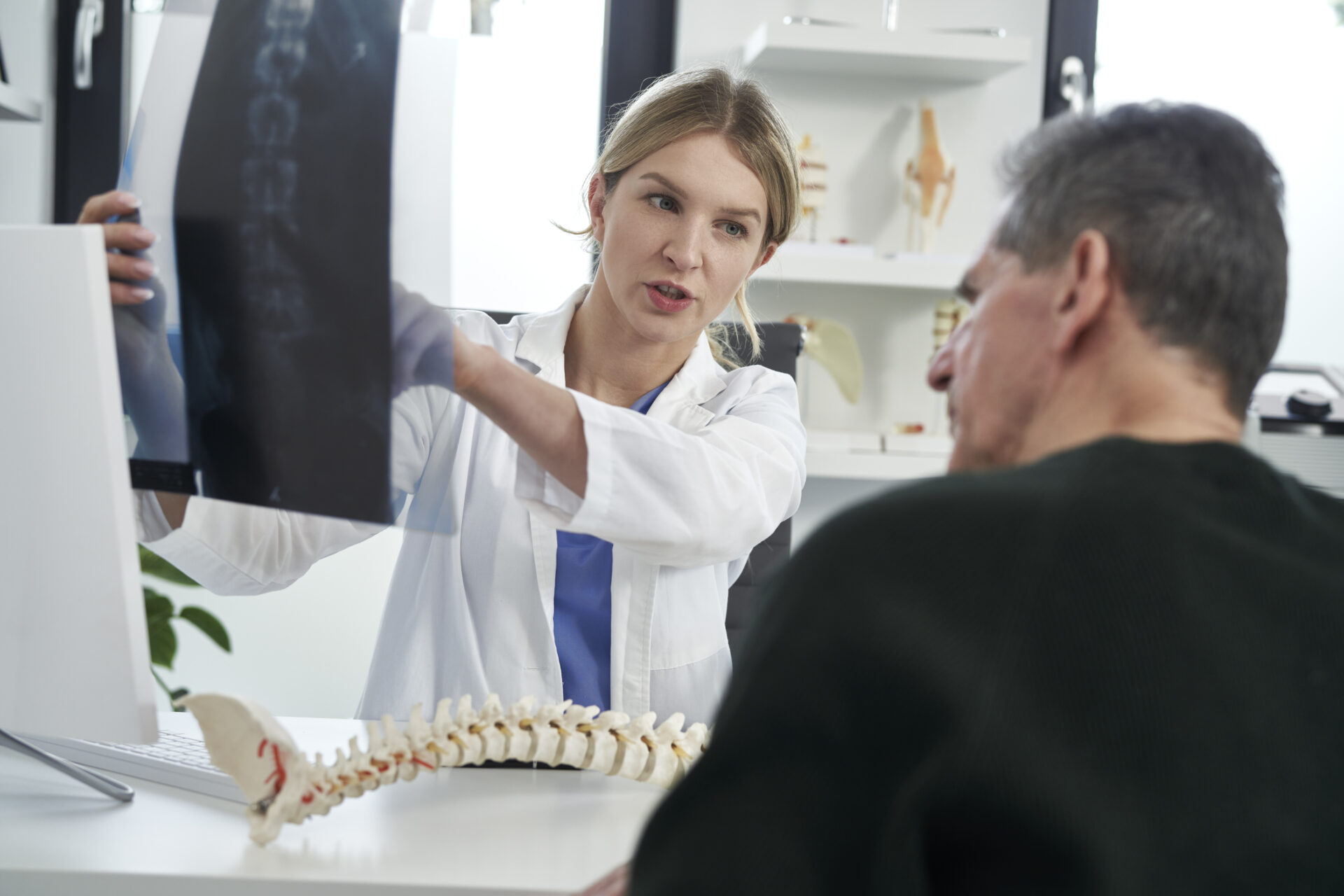
Podiatry
Muhlenberg ASC’s team of podiatrists performs careful and concise surgical care surrounding the foot and ankle. With the ability to operate in an outpatient setting, our foot and ankle surgeons work to diagnose and treat your injuries in order to get you back on your feet.
- Hammertoe Correction: Hammertoe is a condition that occurs when the middle joint of one of the toes becomes permanently or semi-permanently bent at an awkward angle. This may be caused by several different things, such as: trauma to the toe, ill-fitting footwear, or a lack of balance in the tendons. If non-invasive alterations have not worked, your physician may suggest a hammertoe correction surgery.
Your physician will discuss all options with you regarding the correction procedure. Depending on your needs, the corrections may be made with changes to the soft tissue or even to the bone or joint. If the soft tissue method is used, an incision will be made in the skin and the tendon is released. The tendon may be reattached to a different area of the bone. Usually, this change allows the toe to relax and eliminates the hammertoe.
If the bone method is needed, the physician may have to use joint arthroplasty or joint fusion (or a combination of both). In both methods an incision is made in the skin of the toe joint. During the arthroplasty, the bones on both sides of the middle toe joint may have to be removed in order for the toe to uncurl. If the fusion method is used, the ends of the toe bones are removed and repositioned. - Bunionectomy: A Bunionectomy is a surgical procedure that moves toes back into the correct position. The procedure balances the muscles around the toe joint to ensure that the bunion does not grow back. For this minimally-invasive procedure, a local anesthetic is used—patients remain conscious throughout the 45-minute procedure. The physician will make 3 small incisions in your foot in order to access the surgery site. They will then use specialized instruments to remove the bunion and straighten the toe back to its natural position. One single stitch closes each opening. Patients are able to drive themselves home after the procedure since there is no pain and no general anesthesia is used.
- Neurectomy: A neurectomy may be suggested for an individual suffering from Morton’s Neuroma—a condition that afflicts the nerves of the ball of the foot, usually in the area between the third and fourth toes. There are two approaches that are commonly used for neurectomies. The first, consists of an incision on the dorsal surface (top of the foot). The physician then cuts the ligament connecting the bone, resulting in exaggerated postoperative splaying of the toes due to the loss of the supporting ligament.
- Tarsal Tunnel Release: Tarsal tunnel syndrome describes the compression of the tibial nerve through the tarsal tunnel which results in pain and numbness in the plantar aspect of the foot. A tarsal tunnel release is a procedure in which a doctor performs a nerve decompression in order to relieve pressure from the tibial nerve and allow for proper blood flow. This procedure can reduce pain and restore movement in the foot and ankle for individuals.
